Let’s start with this: what you might call a “warm-up” is just one part of a broader system we call Preparation for Movement.
Before stepping into the water, how you prepare your body determines not only how well you perform but also how long you stay injury-free.
Let’s face it: its one of the most undervalued parts of a session.
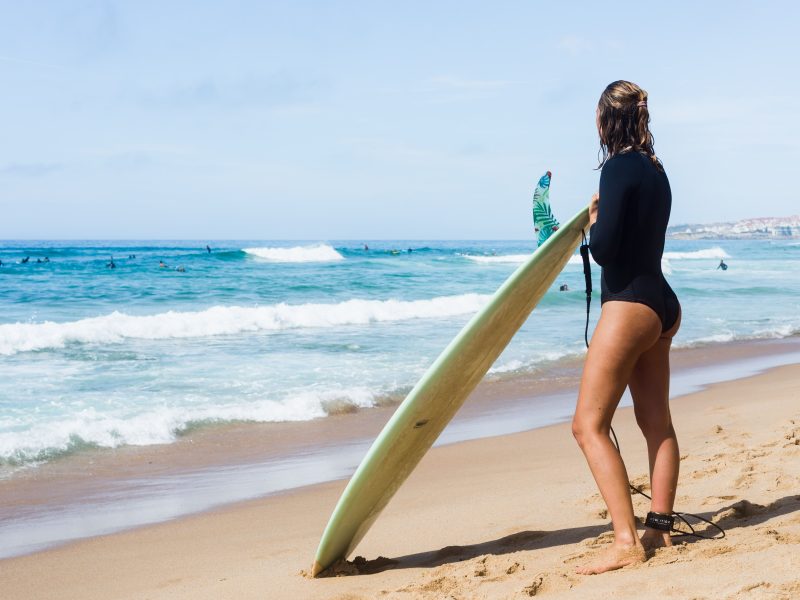
A lot of people skip it entirely or go through the motions without intent. Why? Here are some common reasons:
It feels boring or unimportant. When the waves are firing, spending time on land can feel like wasted time.
Lack of knowledge. Some surfers aren’t sure what to do or how to warm up effectively.
Fear of judgment. Doing drills or exercises on the beach can feel awkward or intimidating, especially around others.
Rushing to the water. Many surfers are eager to maximize their time in the lineup and view prep as optional.
Doing the wrong things. Outdated stretches or generic exercises might not actually help—and could even increase the risk of injury.
While skipping this step might save a few minutes, it’s important to recognize what’s being sacrificed.
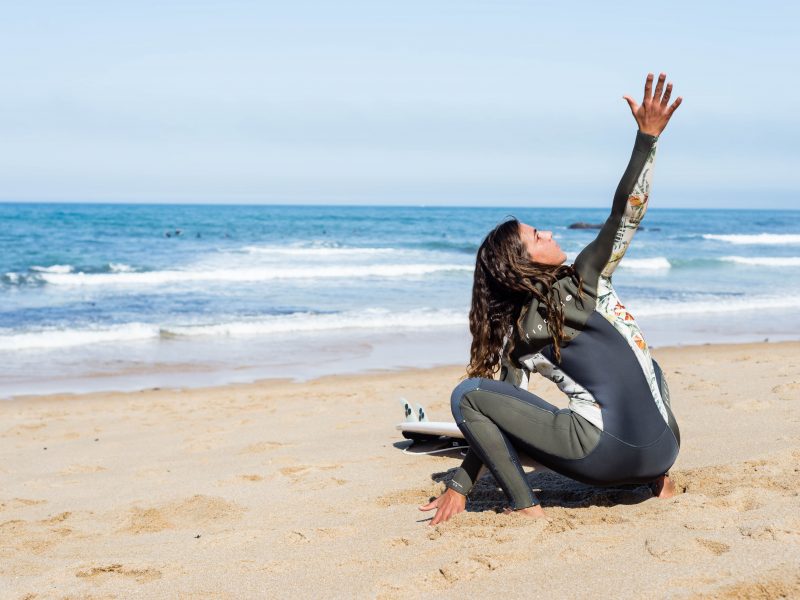
Why Preparation for Movement Matters
Surfing is demanding—it combines strength, endurance, flexibility, and sharp motor control. Heading into the water unprepared puts your body at a disadvantage, increasing the risk of injury and limiting your performance.
Preparation for Movement does three critical things:
Prepares muscles and joints for dynamic movement. This makes your paddling smoother, pop-ups faster, and maneuvers more fluid.
Activates the neuromuscular system. This improves your power and reaction time when faced with unexpected changes, like a fast-breaking wave.
Reduces injury risk. Prepping your body improves tissue resilience, range of motion, and stability, especially in high-risk areas like shoulders, back, and knees.
It’s not just about warming up—it’s about systematically priming your body to move efficiently and powerfully.
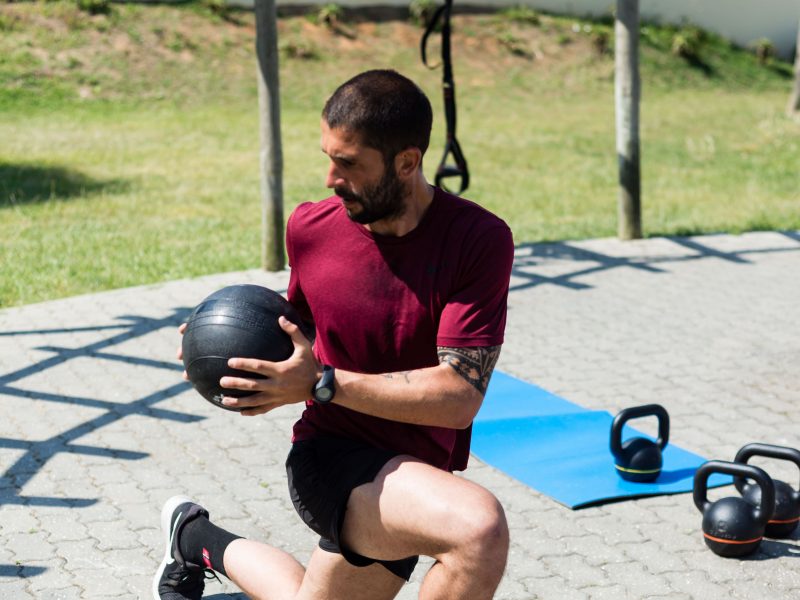
Overcoming the Barriers
If you’ve been skipping this part of your surf routine, here’s how to change that:
Keep it short and specific. A focused, effective prep can take just 8–10 minutes. It’s about quality, not quantity.
Find a routine that works for you. Use drills that target the demands of surfing while addressing your individual needs, whether it’s improving shoulder mobility or sharpening reaction time.
Practice with confidence. If you feel uncomfortable warming up in front of others, remember: the best athletes in the world never skip their prep. It’s a sign of commitment to your craft—not a weakness.
Build the habit. Like anything, consistency is key. Commit to making movement prep part of every session, and soon it’ll feel as essential as waxing your board.
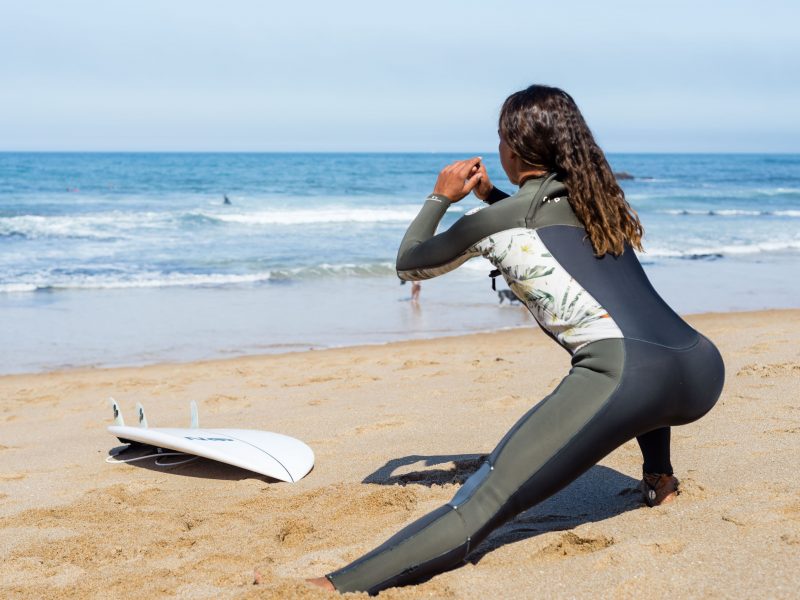
The Four Phases of Preparation
A proper movement preparation session goes beyond just jogging on the spot. It’s structured, intentional, and targets the specific demands of surfing. Here’s how it breaks down:
1. Activation
Focus on engaging the key muscles that support movement in the water. For surfers, this often means the glutes, core, and scapular stabilizers. These muscles create a foundation for paddling, balancing, and explosive movement.
Example: Glute bridges or scapular push-ups.
Key Point: Controlled, intentional movements are essential—focus on muscle engagement, not speed.
2. Mobility
Dynamic mobility work improves your joint range of motion, allowing you to move fluidly and without restriction. This is particularly important for shoulders (paddling), hips (pop-ups), and thoracic spine (rotation).
Example: Hip openers, thoracic spine rotations.
Key Point: Avoid static stretches here; prioritize active, dynamic movements.
3. Thermogenic Phase
Elevating your body temperature and heart rate improves circulation and increases elasticity in your muscles, preparing them for the demands of surfing.
Example: Light jogging or jumping jacks.
Key Point: Keep it moderate—this isn’t about tiring yourself out but about prepping your system.
4. Neural Potentiation
This phase fine-tunes your nervous system for explosive and reactive movements. It’s particularly crucial for surfers who rely on split-second adjustments.
Example: Plyometric movements like jump squats or short sprints.
Key Point: Keep it brief and intense, focusing on quality over quantity.
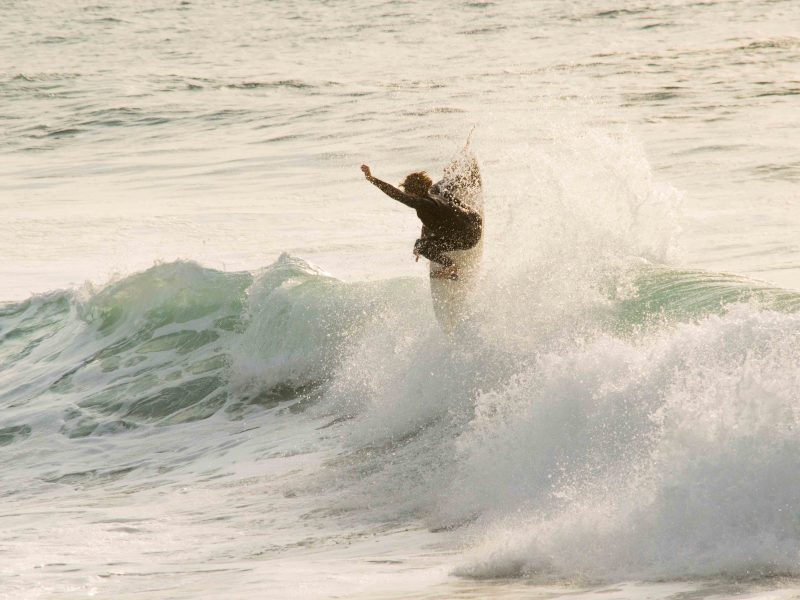
How to Apply It to Surfing
Preparation for Movement doesn’t need to take long—8 to 15 minutes is enough if done correctly. Tailor your routine to the specific demands of your session.The emphasis of your preparation can shift depending on the session: For example:
Target the Right Muscles
Surfing relies heavily on specific muscle groups, and a strong, prepared foundation is crucial. Focus on:
Shoulders and scapula for paddling endurance and injury prevention.
Core muscles for stability and efficient pop-ups.
Hips and lower body for mobility during maneuvers and quick adjustments.
Focus on Joint Mobility
Dynamic mobility drills prepare your joints to move through their full range of motion, ensuring smooth paddling, better rotation, and efficient pop-ups. This is especially important for the shoulders, hips, and thoracic spine—key areas in surfing.
Elevate Your Heart Rate
The thermogenic phase increases blood flow, warms up the muscles, and enhances elasticity. This phase should be light but effective, just enough to prepare your body for exertion without causing fatigue.
Sharpen Your Nervous System
The final step primes your nervous system for explosive movements, such as popping up quickly or reacting to a breaking wave. These drills should mimic surfing-specific actions and focus on quality over quantity.
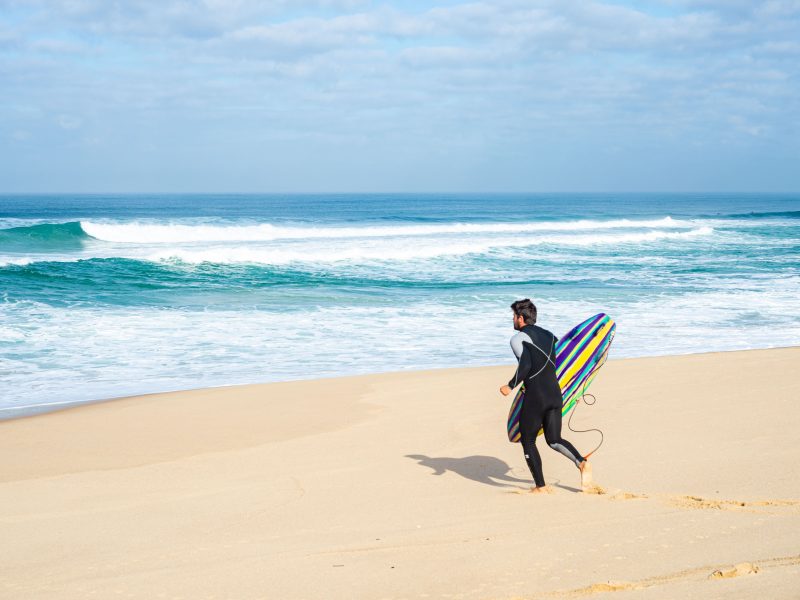
Preparation for the Movement Routine Example
Here’s a 8 minutes preparation for the movement routine using the exercises you provided, designed to prepare your body for optimal performance while reducing injury risk. Each exercise is chosen for its relevance to surfing: improving core stability, joint mobility, dynamic strength, and explosive power.
Dead Bug (30 seconds)
Builds core strength and coordination, helping you stay stable during pop-ups and turns. Lie on your back, extend one arm and the opposite leg downward, keeping your lower back flat.
Bird Dog (30 seconds)
Engages the core and stabilizes the spine, which is crucial for paddling and maintaining balance on the board. Alternate extending one arm and the opposite leg, focusing on control and alignment.
Side Plank with Rotation (30 seconds each side)
Activates the obliques and shoulders while improving rotational stability—essential for generating power during maneuvers. From a side plank position, rotate your top arm under your torso and return.
World’s Greatest Stretch (1 minute)
Increases hip, hamstring, and thoracic spine mobility for smooth pop-ups and powerful turns. Step one foot forward, drop your hips, and rotate your torso toward the forward leg. Alternate sides.
Side Lunges (30 seconds each side)
Opens up the hips and strengthens the lower body for improved stability and quick transitions on the board. Step laterally, keeping your weight over your heel, then return to standing.
Y-T-W Raises (1 minute)
Activates the upper back and shoulders, preparing your paddling muscles and improving posture. Lie face down or hinge at the hips, and move your arms into “Y,” “T,” and “W” shapes.
Unilateral RDL (1 minute)
Enhances single-leg balance and hamstring strength, both critical for maintaining stability during dynamic surfing movements. Hinge forward on one leg, keeping your back straight, then return to standing.
Squat Jumps (15 seconds)
Builds lower-body explosive power for faster, more controlled pop-ups. Perform a deep squat and explode upward, landing softly.
Plyometric Push-Ups (15 seconds)
Improves upper-body explosiveness and strengthens the muscles used in paddling and popping up. From a push-up position, push off the ground forcefully so your hands leave the floor.
Skaters (30 seconds)
Develops lateral power and agility, mimicking the side-to-side movements needed for carving and quick wave adjustments. Leap laterally from one foot to the other, maintaining control.
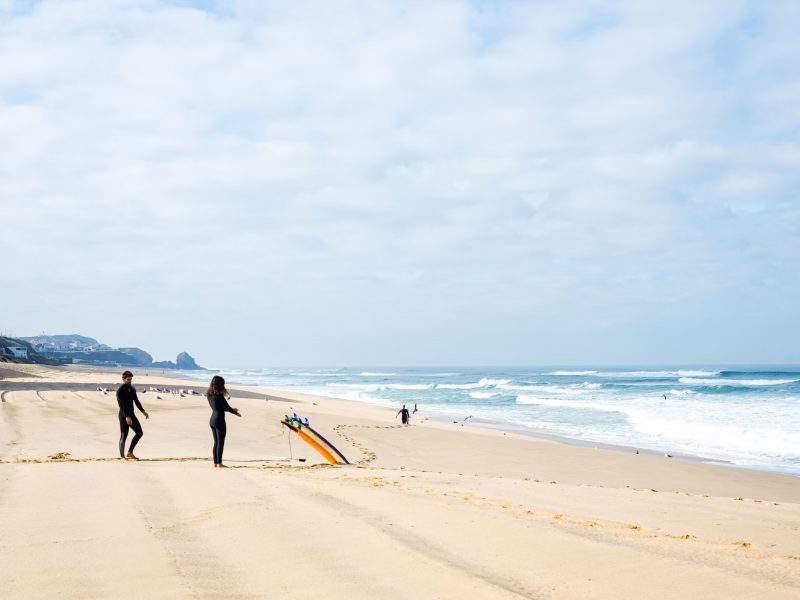
Takeaway
Next time you’re tempted to skip your prep, think about the long-term benefits. Think of it as an investment in your performance.
A prepared body moves better, performs longer, and stays healthier over time.
A few minutes on land can translate to stronger sessions, improved performance, and a healthier, injury-free body in the long run.
Make it a part of your routine, and you’ll notice the difference.




